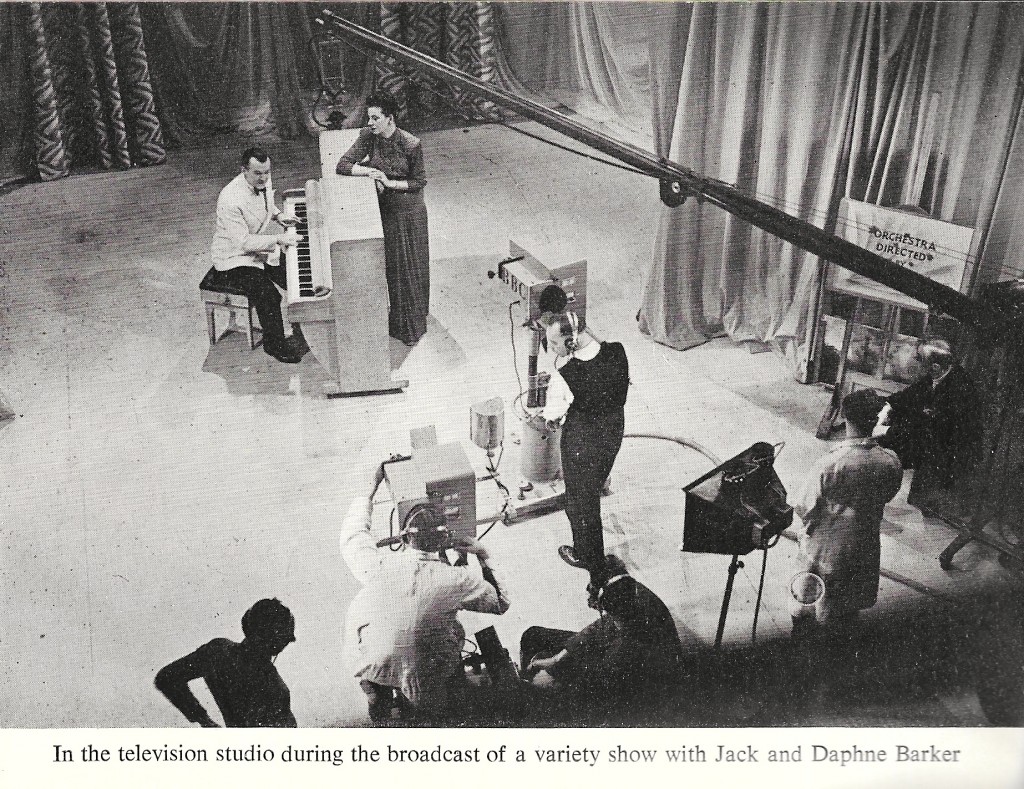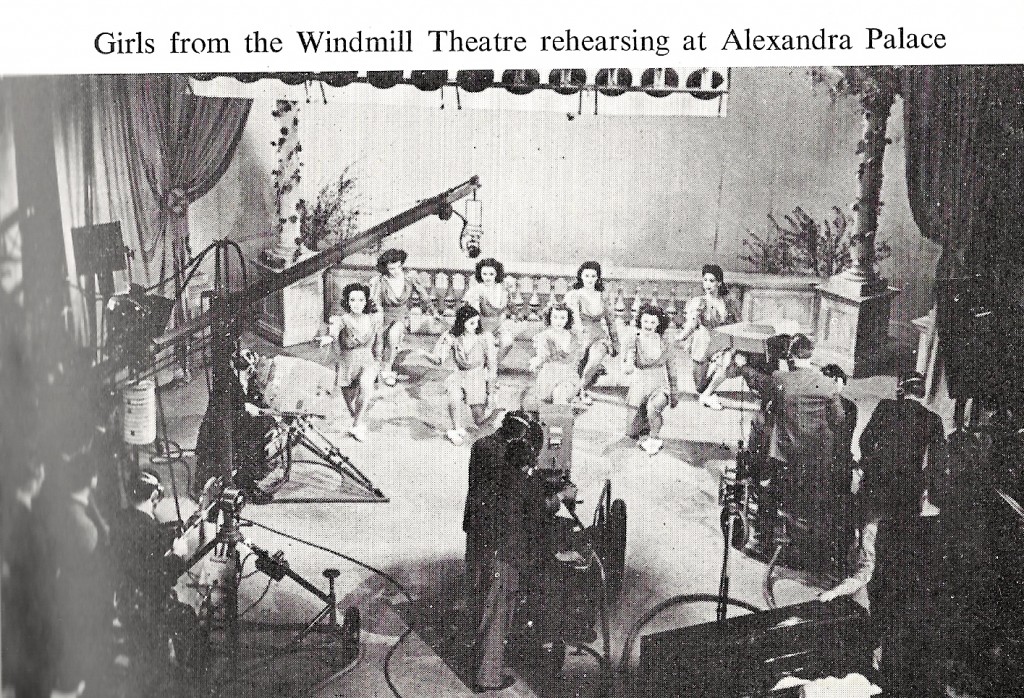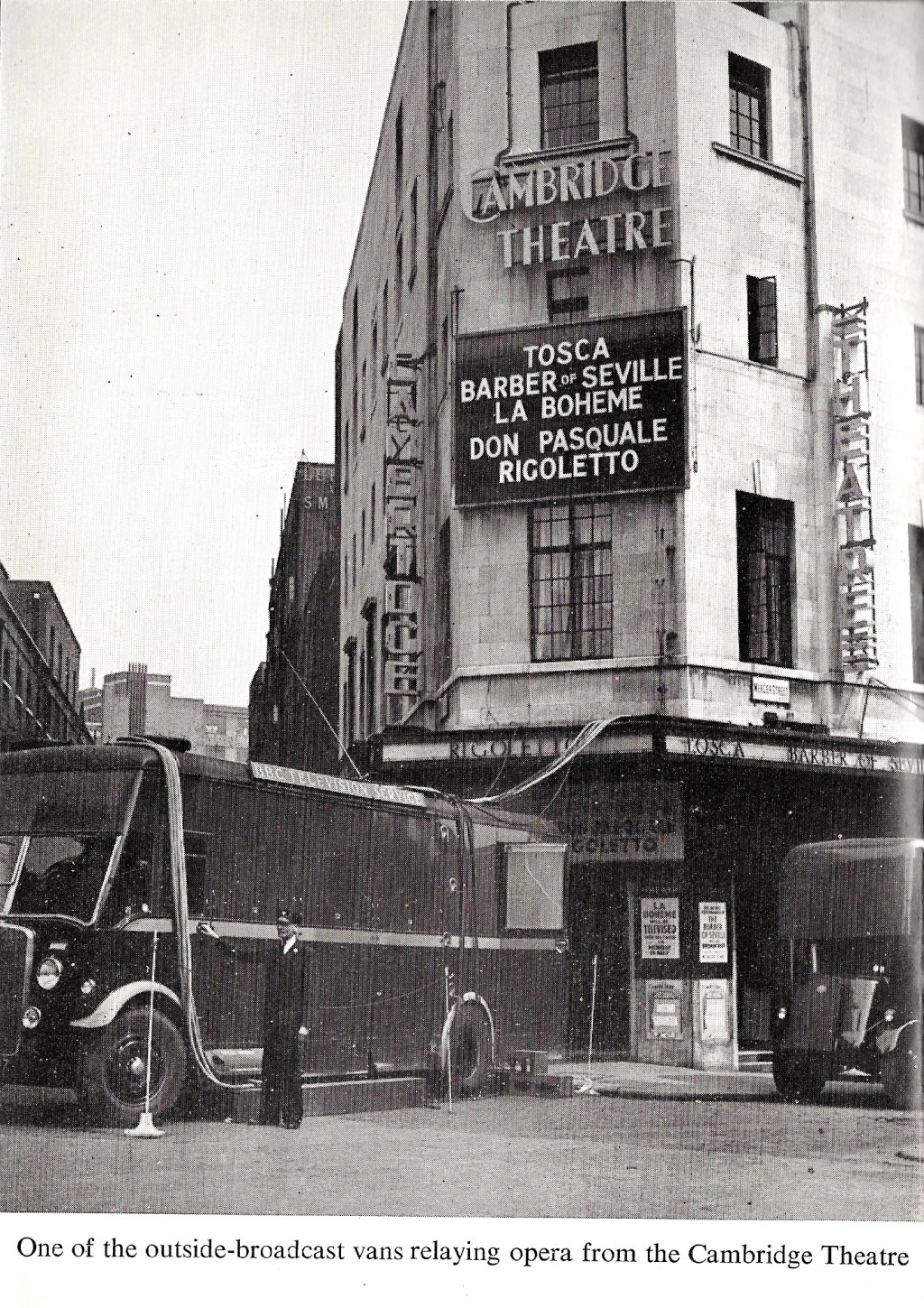So this is television – in 1948

Among the books that I collect and cherish are early publications about television. Anything from before about 1960 qualifies as ‘early’, but volumes from the 1930s and 1940s are especially interesting. So I was particularly pleased on a visit to Whitstable on Sunday to purchase for just £4.95 a compact (and to me previously unknown) guide titled Television Behind the Scenes. The author of this 1948 introduction is John K. Newnham, a movie critic who wrote for Film Weekly and Picturegoer, and it was published by Convoy Publications, the address of which is given rather wonderfully as North Circular Road, Neasden, N.W.10. The 103-page book comprises twelve chapters from ‘So This is Television’ to a (very useful) ‘Who’s Who in Television’, with short essays devoted to ‘The Announcers’, ‘The Producers’, ‘Outside Broadcasts’ and ‘The Viewer’. And, thrillingly, there are 21 photographic illustrations, several of which I reproduce here.

Much of the appeal of books like Television Behind the Scenes, along with a delicious sense of nostalgia, is the way in which they reveal aspects of and attitudes towards the medium and its workings that are otherwise hard to retrieve from history. Like this, from the opening page:
Most of us now take radio for granted… Television, however, is still a mystery and still a thrill. It has passed out of the novelty stage, but even long-standing viewers regard it with awe, as something of a miracle which is a long way beyond the realms of normal understanding.

From nearly 70 years ago, here are some further fragments of the text to accompany the resonant (and frustratingly uncredited) images:
One must inevitably compare television with the cinema, for it takes much of its technique from this source as well as from the theatre and radio itself… Generally speaking, players find television one of the most trying forms of acting. It is more tiring than either stage or screen. The best of the studio becomes almost unbearable after a time. The cramped space is difficult. There are those long feats of memory. But television has one great advantage over the films: the action is continuous and it is easier to get into the atmosphere of the show.

On television plays, as discussed by the ‘keen-eyed Irishman named Robert MacDermot’ who was in charge of the drama department:
‘Between 80% and 85% of them’, he remarked, when I tackled him, ‘are adaptations of previously produced stage plays. At present, only 10% are originals written especially for television. The balance consists of adaptations of stories. My aim is to increase the number of original works up to about 25%, and I am going all out to encourage authors to write direct for television.’

On the need for additional lighting for outside broadcasts from theatres and indoor sporting venues:
The special television lighting has been bitterly criticized by some of the contestants in venues such as boxing matches and table tennis tournaments and there have been complaints of eyestrain (usually, let it be added, from the losers!). The BBC, investigating these complaints, had an expert medical enquiry into the whole situation and came through with a completely clean bill and the assurance that the extra lights were harmless.

On whether television will ever replace the cinema:
Quite a few people think there is a serious chance of this, though not for some time. Few television people seriously think so, however; nor do I… The film can always be more spectacular and extravagant, and the techniques themselves must always be different; but what is even more in its favour is that it gives people the chance to get away from their homes for a brief spell, and not too expensively. People will always be gregarious; and housewives in particular will always want to go out in search of complete relaxation.

And finally on the ways in which television is watched at home:
Television has also had a significant influence on the social life of the communities within the receiving radius [which at the time was restricted to Greater London], and particularly in out-of-town districts. It has brought back the old ‘musical evening’ habit, reminiscent of the days when visitors would gather at the home of a friend. But instead of little Elsie playing the piano and Uncle George singing a few songs, as of yore, the visitors now watch the television. Few television viewers keep their sets to themselves
This in turn has been excellent propaganda for television. Visiting viewers almost invariably find it impossible to resist the temptation to purchase a set for themselves if their pockets can stand the strain – and television is not so expensive as many people imagine. Sets are no dearer than radiograms. You can get a perfectly good set for under £80, inclusive of purchase tax.
What a terrific find – as an occasional hunter in Whitstable bookshops I am envious. I’m greatly enjoying the unblocked blog. A torrent of things, all good and very readable.